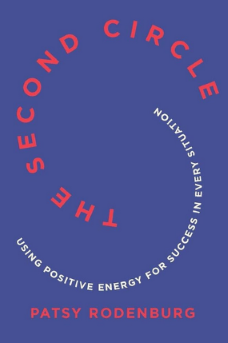Exploring ways to foster creative energy.

Many years ago, when my then agent had been doing the rounds with my first novel, I asked an interesting question: “What is the book I could write that you would love and which you would also be able to sell?”
“You’ve already given me the book I love,” she responded. “But the book I could sell? That would be the next Obama memoir.”
That first novel never got published, although my second one did. Then I wrote a third, which I thought was the best I’d written but which also never found a publisher. I spent several years obsessing over it, and on the advice of a different agent, reworked it until I was absolutely sure more was at stake than just publication. I’m talking about the survival of my soul!
Writing a book is hard. Getting it published is harder. You twist yourself in knots questioning the value of what you’re trying to do. You begin to focus on things you can’t control, like the market and the competition, instead of on the inherent quality of your work.
So, how do we get back to basics — to that vital creative spark? How do we remain authentic as artists? How do we find open doors instead of spending so much time knocking desperately on closed ones?
The Creative Act: A Way of Being by Rick Rubin is a wonderful place to start. It’s the most refreshing book about the creative process I’ve read in years. He insists that creativity is inherent in us all, but to engage it properly, we need to “create an open space that allows it.” He emphasizes listening and freeing ourselves up to explore without attachment to results.
“Listening is suspending disbelief,” he writes, and it requires presence.
He has a helpful perspective on non-competition, too:
“Some may argue that competition inspires greatness. The challenge of exceeding what others have accomplished can act as an incentive to push our creative limits. In most cases though, this energy of competition oscillates at a lower vibration.”
Creative endeavors make us feel alive because they make our vibrations stronger. Which brings me to another book I love, Patsy Rodenburg’s The Second Circle: Using Positive Energy for Success in Every Situation. She writes about three circles of energy in artistic performance. In the second, you’re fully alert and in the moment, which is where you want to be to have stage presence. Animals and children are almost always in the second circle, she says. That’s how they steal the limelight and why actors don’t like sharing the stage with them.
First-circle energy is cooler, guarded, inward, more about the past. And third-circle energy is more about the future. Although initially impressive, third-circle energy can be bombastic and take up too much oxygen in the room.
Each of these circles has value. You couldn’t stay in the second all the time, nor would you want to. But when you’re fully engaged in the second circle, you’re at your creative best. Rubin would agree. He writes about the energy of children, for whom “each moment in time is all there is. No future, no past…All pure authenticity.”
Naturally, there is often a struggle in writing a book or in creating art of any kind. And it’s important to embrace that struggle. Who wants a complaisant, cow-like existence? But staying present and remaining curious in your creative work makes you less like a cow in the pasture endlessly ruminating on her cud, and more like a fox, alive and alert, prowling the edge of the field.
I also realize that getting a book published sometimes means making concessions to the market. That’s always an option. But I’ve decided to give it up, at least for now. It took courage to set aside that novel I’d been invested in for years. Nevertheless, I learned a lot in the struggle to write it, and when I let go of my attachment to results, I began to notice other open doors and decided to walk through them instead.
As I’ve done this, many opportunities have come my way, especially related to poetry, which has been a delightful surprise. These opportunities seem to unfold quite naturally, too, like finding a puzzle piece that fits comfortably into its perfect slot.
Maybe one day I’ll try to write another novel. I’m not ruling anything out. But if I do, my approach is going to be different.
“How can you tell when you’re moving in the right direction?” Rubin asks toward the end of The Creative Act. “What does forward motion look like? You could say it’s a feeling. An inner voice. A silent whisper that makes you laugh. An energy that enters the room and possesses the body. Call it joy, awe, or elation. When a sense of harmony and fulfillment suddenly prevails.”
I love that. It’s what I’ve been experiencing lately in my work, and it’s the kind of energy all of us can cultivate.
Amanda Holmes Duffy is a columnist and poetry editor for the Independent and the voice of “Read Me a Poem,” a podcast of the American Scholar.

_80_86.png)